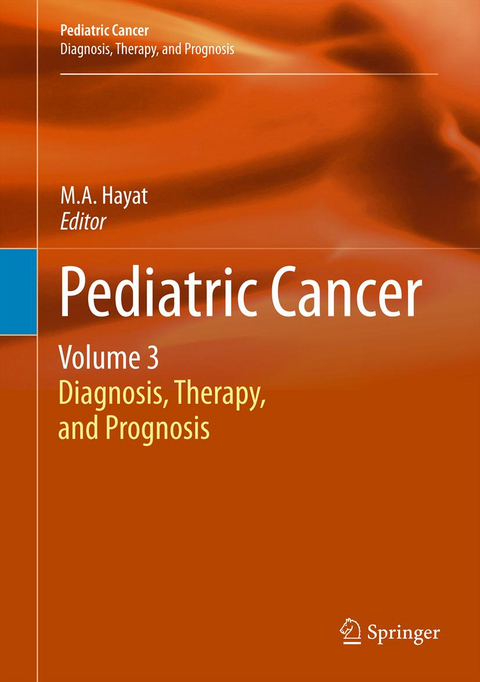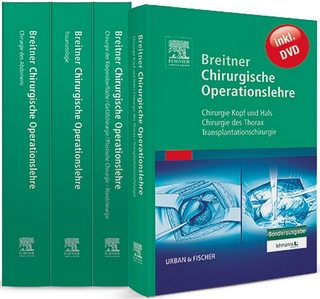
Pediatric Cancer, Volume 3
Springer (Verlag)
978-94-007-4527-8 (ISBN)
Contributors also examine the reasons for the common misdiagnosis of AT/RT tumors as other types of CNS tumors. They help resolve this issue by indicating the details of an abnormality in the genetics of AT/RT, which is unique to AT/RT type. The INII gene on chromosome 22q11 is involved in the AT/RT. The presence of this gene and the SMARCB1 is discussed. In addition to discussing these important topics, the volume includes presentations of present and future therapies. The volume also explains AT/RT’s dissemination to the cerebral fluid, the molecular mechanisms underlying the progression of medulloblastoma, and the importance of gamma knife radiosurgery during multimodality management of medulloblastoma/PNET tumors. Other topics discussed include using magnetic resonance imaging for diagnosing retinoblastoma, and mapping the effects of radiotherapy in low-grade glioma in children. Information on alterations incell-cycle regulators that are influenced by tumor suppressor genes and oncogenes is detailed. Contributors provide recommendations concerning non-narcotic analgesic routines for children recovering from cranial and spinal surgery. The practical knowledge of frontier-expanding research presented leads this authoritative volume to be a compelling addition to the literature.
I. Teratoid/rhabdoid.1 Early childhood atypical teratoid/rhabdoid tumors.-2 Atypical teratoid/rhabdoid tumors.-3 Pediatric teratoid/rhabdoid tumours: deletion of chromosome 22q11.2.-4 Pediatric atypical teratoid/rhabdoid tumor: role of ini1 tumor suppressor gene.-5 Atypical teratoid/rhabdoid tumors: diagnosis using imaging.-6 Pediatric atypical teratoid/rhabdoid tumor in the spine: diagnosis and treatment.-7 Early childhood clival-c2 atypical teratoid/rhabdoid tumor: gross total resection followed by aggressive chemotherapy and radiation.-8 Pediatric atypical teratoid/rhabdoid tumors: dissemination to the cerebrospinal fluid. II. Medulloblastoma.-9 Teratoid pediatric medullomyoblastoma.-10 Pediatric medulloblastoma: mechanisms of initiation and progression.-11 Medulloblastoma initiation and growth: role of hepatocyte growth factor.-12 Medulloblastoma – molecular genetics.-13 Pediatric medulloblastoma: the role of heterozygous germ-line mutations in the nbn gene.-14 Pediatric medulloblastoma: pituitary adenylyl cyclase activating peptide/protein kinase a antagonism of hedgehog signaling.-15 Medulloblastoma: role of mycn gene amplification using fluorescence in situ hybridization and real time quantitative pcr methods.-16 Pediatric medulloblastoma: ultrastructure.-17 Pediatric medullomyoblastoma: immunohistochemical analyses.-18 Boost gamma knife radiosurgery during multimodality management of medulloblastoma / pnet tumors.-19 Early childhood medulloblastoma: prognostic factors. III. Retinoblastom.-20 Trilateral retinoblastoma: diagnosis using magnetic resonance imaging.-21 Pediatric intraocular retinoblastoma: treatment. IV. Glioma.-22 Pediatric high-grade glioma: role of microsatellite instability.-23 Low-grade glioma in children: effects of radiotherapy. V. Spinal tumors-24 Pediatric multiple primarycranio-spinal tumors associated with neurofibromatosis type 2: combined therapeutical strategies.-25 Pediatric intradural lipoma of the cervicothoracic spinal cord: laminectomy and duraplasty. VI. Miscellaneous tumors.-26 Pediatric embryonal tumors: prognostic role of cyclin a and b1 proteins.-27 Intracranial pediatric ependymoma: role of cytogenetic markers using comparative genomic hybridization and fluorescent in situ hybridization.-28 Pediatric hepatoblastoma. Complete surgery and ultrasound monitoring.-29 Treatment of pineal region tumors in childhood.-30 Benign testicular tumors in children: testicular preserving surgery. Index.
| Reihe/Serie | Pediatric Cancer ; 3 |
|---|---|
| Zusatzinfo | XXXI, 301 p. |
| Verlagsort | Dordrecht |
| Sprache | englisch |
| Maße | 178 x 254 mm |
| Themenwelt | Medizinische Fachgebiete ► Chirurgie ► Ästhetische und Plastische Chirurgie |
| Medizin / Pharmazie ► Medizinische Fachgebiete ► Onkologie | |
| Medizin / Pharmazie ► Medizinische Fachgebiete ► Pädiatrie | |
| Studium ► 2. Studienabschnitt (Klinik) ► Humangenetik | |
| Schlagworte | Kinderheilkunde; Onkologie |
| ISBN-10 | 94-007-4527-3 / 9400745273 |
| ISBN-13 | 978-94-007-4527-8 / 9789400745278 |
| Zustand | Neuware |
| Haben Sie eine Frage zum Produkt? |
aus dem Bereich


